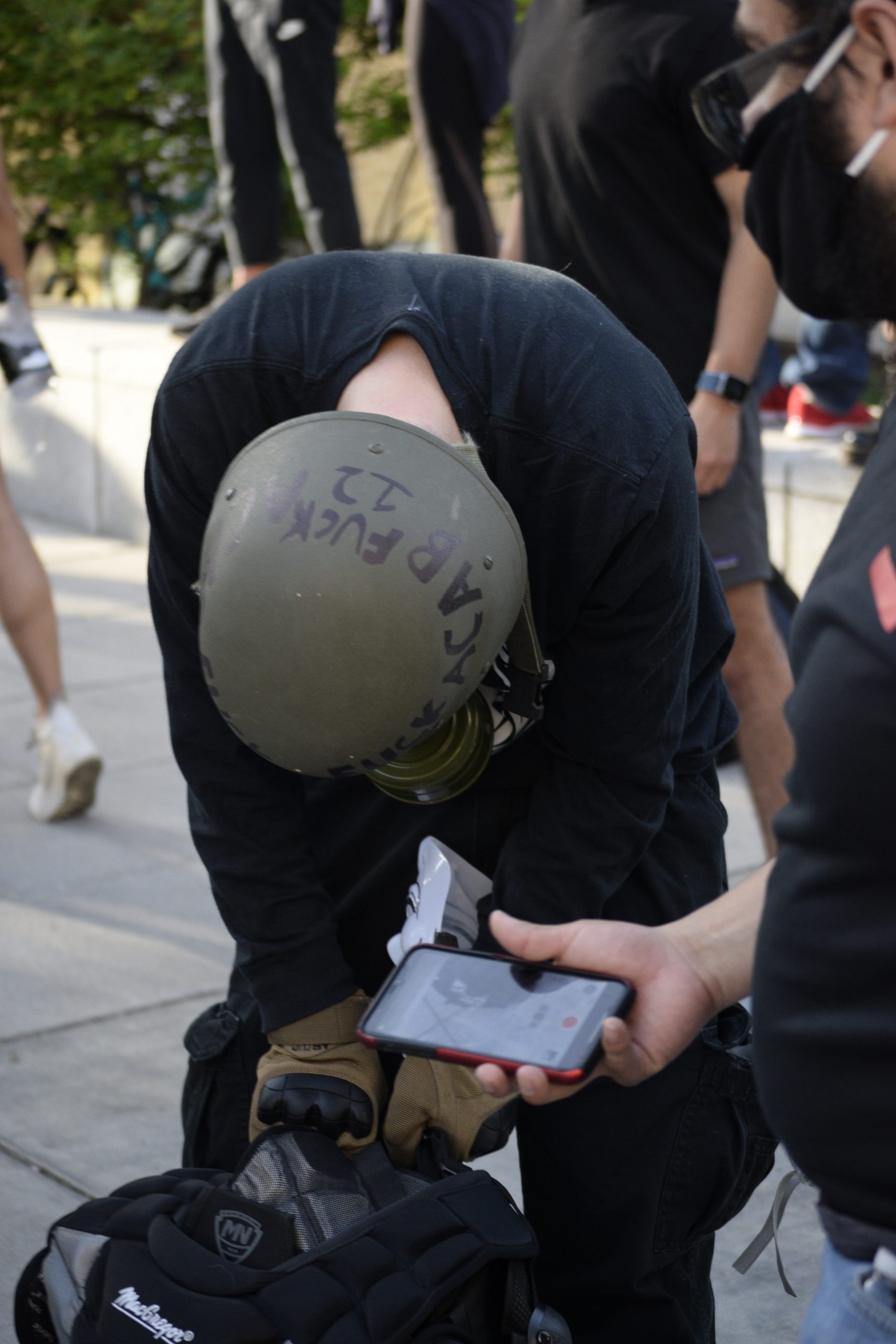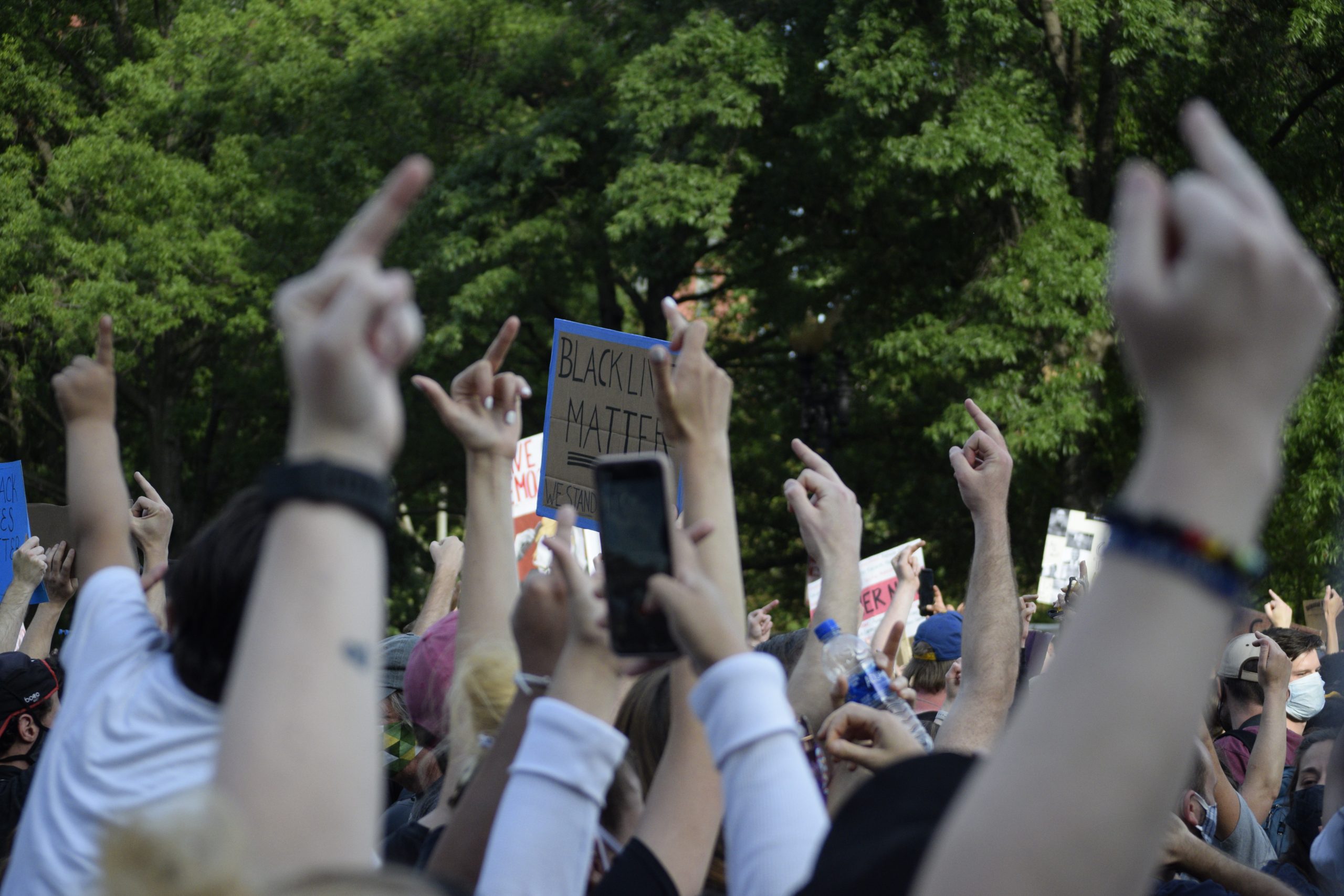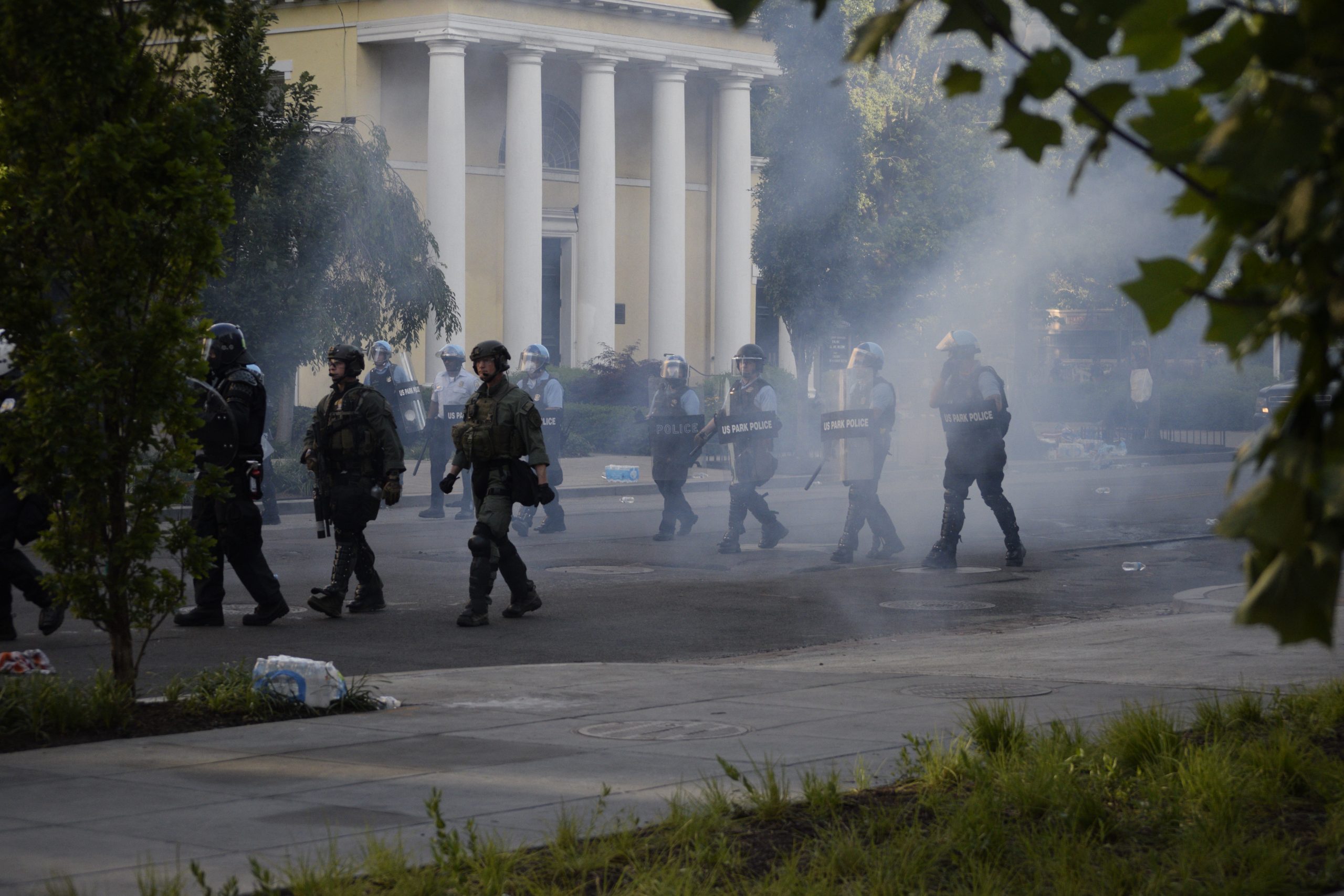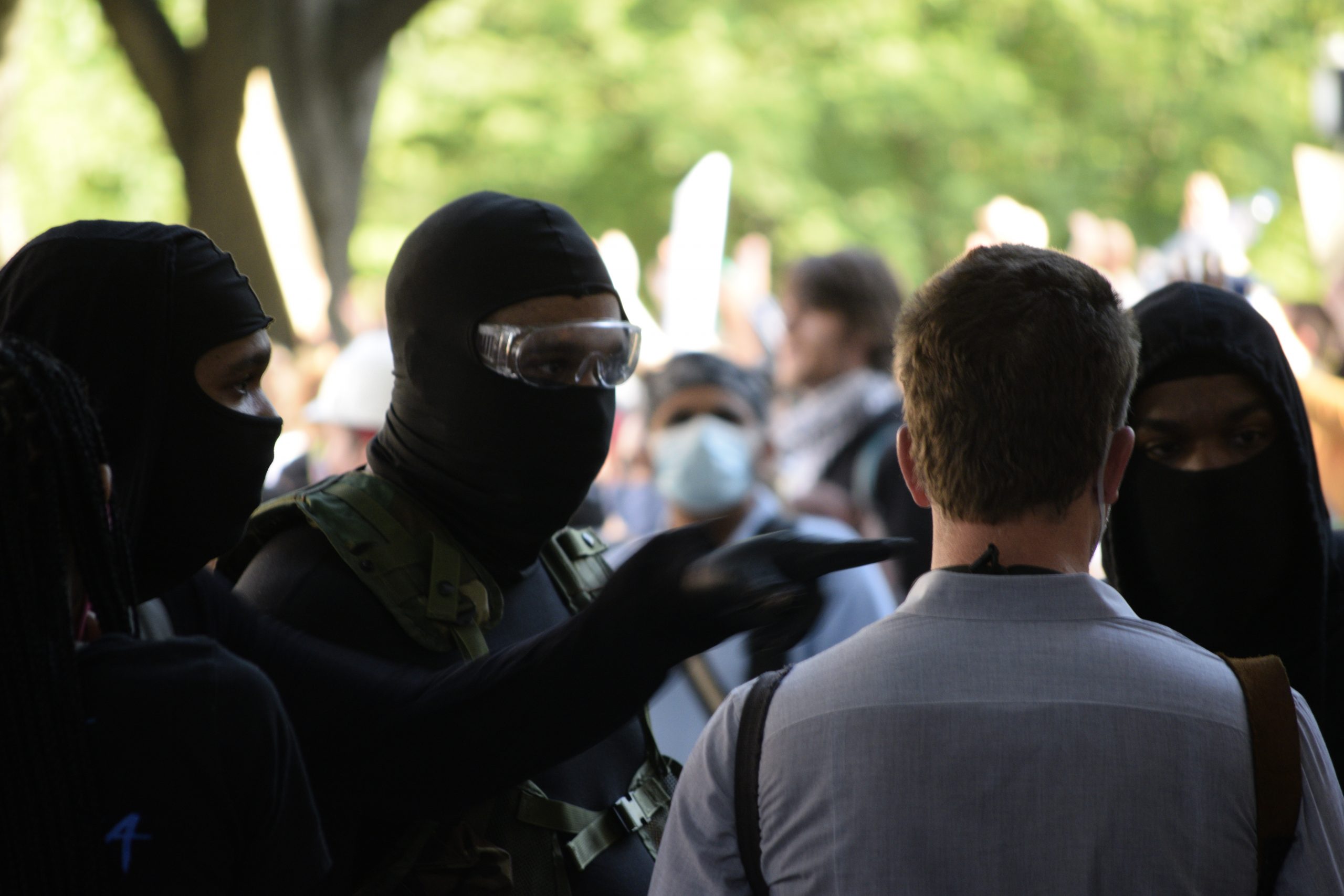The “peaceful protester” lifted up his shirt to show me where he’d been hit by rubber bullets the night before — three or four round, red welts about the size of quarters. This was late afternoon on June 1, about an hour before Trump made his much-criticized walk from the White House across Lafayette Square to St. John’s Episcopal Church.
The “peaceful protester” in question had been atop the maintenance structure in Lafayette Square the night before and was among those who set it on fire, he said. In fact, being shot by the rubber bullets of riot-clad park policemen and other law enforcement agents excited him enough to make him want to burn everything down, including the White House itself.
“Why did they shoot you off the roof?” I asked.
“We were giving it to them good,” he laughed. “Bricks, rocks, bottles — they decided to get us back.”
It all sounded like good fun: the rioting, the vandalizing of revered public monuments, the smashing of windows, the burning, the looting — exactly what you’d do on a dull Sunday night during lockdown after you’ve seen everything there is to see on Netflix.
The “peaceful protester” was white, as was most of the crowd that day. He was about 25 years old, thin (bordering on anemic), and had a scraggly beard and many tattoos. He wore black cargo shorts, military boots, and a homemade “anarchy” T-shirt and carried a heavy black backpack full of something I didn’t ask about. What looked like an eastern European army surplus infantryman’s helmet hung at his side.

This was my first foray with my daughter’s camera into the protesting crowds. I found that most people would talk candidly to a man carrying a camera pretending to be a photojournalist. (I’m not. I’m a novelist.) People just assume the camera is on their side. Also, as a veteran of Washinton’s 1980s punk scene, I could conjure the juvenile attitude of wanton destruction (F— Reagan! F— the Police! F— everything! Tear it all down!) and could put it on again when necessary, like a tattered old jean jacket held together with Clash buttons, safety pins, and nostalgia.
Of course, as everyone knows, the White House has been burned before by enemies of the republic: On Aug. 24, 1814, the British took the city nearly unopposed. The invaders torched all the official buildings, including the White House. A party of Royal Engineers ate a good dinner at President James Madison’s expense before getting down to their act of national vandalism: “So unexpected was our entry and capture of Washington,” British Major General Robert Ross later wrote, “when our advance party entered the President’s house, they found a table laid for forty.”
The “peaceful protester” I spoke to on that balmy Monday was, however, fed not by President Trump but by well-wishers and fellow travelers, identities unknown, who left dumps of food and water bottles (mostly used as projectiles by the “peaceful protesters”) on every street corner.
I repeat the words “peaceful” and “protester” again and again here to prove a point. The media, reporting on the events of June 1, have continually stressed the modifier “peaceful” with regard to the protesters at Lafayette Square. Here is the accepted narrative; anyone who contradicts it is liable to lose a job in academia or be ostracized by liberal friends (emphasis added in the below quotes).
“Military police pounced on peaceful protesters. … No one said they had seen any aggression from protesters,” Slate posted.
“Officers fire tear gas on peaceful protesters to clear the way for Trump’s photo op,” read the headline on Vox.
“Peaceful protesters choking on chemical irritants” is how the Washington Post described the scene.
“The attack on the protesters was surprising in its ferocity,” said the Black Lives Matter mouthpiece Colorlines, “particularly given that the protest appeared to be vocal but peaceful.”
And there’s this from a hastily produced video courtesy of the Biden campaign: “[Trump’s] afraid he looks too weak, so he has tear gas and flash grenades used on peaceful protesters just for a photo op.”
Indeed, the modifier “peaceful” affixed to the noun “protester” has also been all over TV describing the semiriotous participants in the June 1 demonstrations. This is a subtle kind of Orwellian newspeak: Repeat the phrase “peaceful protester” enough times, and soon enough, it becomes a mantra. Soon enough, the average person will find it impossible to imagine any other kind of protester, even as those other kinds (pick your modifier: dangerous, riotous, malicious, whatever) march the streets.
Naturally, much knee-jerk criticism has been aimed at police reactions that afternoon: A lawsuit has been filed by Black Lives Matter D.C. on behalf of the brutalized peaceful protesters. The lawsuit claims their First Amendment rights were infringed by police who “inflicted wanton violence on hundreds of people who gathered at the White House.” It compares the treatment of the peaceful protesters by police to the “Tulsa Race Massacre, Ferguson and other violence against black people” — even though most of the protesters I saw that day were white.

This violence occurred when Attorney General William Barr decided to move the bottle-throwing peaceful protesters out of the way so that the president could visit St. John’s Episcopal Church, which other peaceful protesters had tried to burn down by throwing firebombs through basement windows the night before. The president had every right to walk to the church, whose facade is adorned with a large sign that says “ALL ARE WELCOME,” and pause for a photo-op: Standing John Wayne tall, awkwardly holding up a Bible (as if he’d never touched one before) to show his support for our sacred institutions and to show the peaceful protesters that law and order and not chaos would win the day.
I was there when the barricades opened suddenly and the riot police made their move across H Street to clear the way. Almost none of it went down the way the media described it.
Yes, I got flash-banged by flash-bang smoke grenades, and I detected the tang of pepper spray in the air. But I did not get tear-gassed or shot with rubber bullets or beaten with a club by a mounted policeman. Rubber bullets and tear gas were not used at the intersection of 16th and H on June 1. I can tell you that with certainty. I was barely 2 feet away from the action, blithely snapping pics with my daughter’s camera.
As the police marched up past the church, they crossed through clouds of smoke from the flash-bangs (I caught this on film), not clouds of tear gas. A close inspection of my photograph shows none of them were wearing gas masks. They would hardly have tear-gassed themselves.

I can also attest to the unpeaceful nature of the peaceful protesters with whom I had just spent the previous three hours. They screamed a continual stream of violent invective into the faces of police and National Guardsmen whose job it was to stand there and take it without flinching — this while other peaceful protesters threw full plastic bottles of water end-over-end in volleys at police lines and glass bottles and whatever else they could get their hands on, including the occasional brick. It must be remembered that these same peaceful protesters just the night before had defaced the Lincoln Memorial.
Adm. Sir George Cockburn counted the burning of Washington among his greatest military achievements and insisted the deed be depicted in the background of his official portrait, which still hangs in the Greenwich Observatory in England. Both Cockburn and Ross would have cheered the June 1 peaceful protesters in their work of destruction.
The media are still in denial regarding the peacefulness of the protesters and continue to promulgate the false and simplistic narrative in which the peaceful protesters were the innocent victims of unwarranted police aggression.

Yes, some of the protesters were peaceful — but many weren’t. A substantial contingent, some wearing the black body armor of antifa rioters, were throwing bottles and bricks and threatening the president at the top of their lungs. I was there. I saw what happened. I heard what they said.
Robert Girardi is a novelist and nonfiction writer who lives in Washington. He is currently at work on a nonfiction history of the War of Jenkins’ Ear. He can be reached at [email protected].

